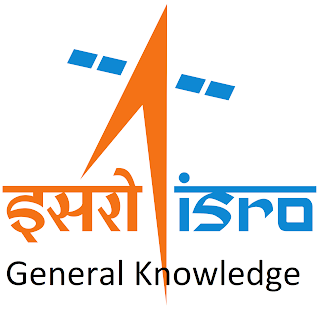Rs. 10,000 crore mission will be a turning point in India’s space journey; most engineering components are ready: ISRO Chairman Chandrayaan-2 scheduled to be launched in January, 2019
As declared by Prime Minister Shri Narendra Modi amid his Independence Day address, India's first Indian human mission will be propelled by Indian Space Research Organization (ISRO) by 2022. This was expressed by the Union Minister of State (Independent Charge) Development of North-Eastern Region (DoNER), MoS PMO, Personnel, Public Grievances and Pensions, Atomic Energy and Space, Dr Jitendra Singh while tending to a question and answer session here today. The ISRO Chairman, Dr. K. Sivan said that ISRO has the abilities to achieve this undertaking by the given time allotment. He said this is a gigantic duty and a testing assignment for ISRO, however it will succeed. The program will make India the fourth country on the planet to dispatch a Human Spaceflight Mission. Up until this point, just the USA, Russia and China have propelled human spaceflight missions.
It might be reviewed that the Prime Minister amid his Independence Day address had declared `Gaganyaan — India's lady human spaceflight program'. He had announced that 'a child or a girl of India will go to Space from Indian soil by an Indian vehicle by 2022 (75th year of Indian autonomy) or sooner'. This is the most goal-oriented space program embraced by ISRO till date and is basic as it will give a major lift to the Science and Technology improvement inside the nation, said Dr Sivan. This will likewise motivate the adolescent of the nation to take up greater difficulties and improve the renown of the nation.
ISRO has built up some basic advancements like reentry mission ability, group escape framework, team module design, warm assurance framework, deceleration and floatation framework, sub-frameworks of life emotionally supportive network and so on required for this programme. A portion of these advances have been exhibited effectively through the Space Capsule Recovery Experiment (SRE-2007), Crew module Atmospheric Reentry Experiment (CARE-2014) and Pad Abort Test (2018). These advances will empower ISRO in achieving the program destinations in a limited ability to focus 4 years.
GSLV Mk-III dispatch vehicle, which has the important payload ability for this mission, will be utilized to dispatch Gaganyaan. Two unmanned Gaganyaan missions will be embraced before sending people. The aggregate program is relied upon to be finished before 2022 with first unmanned trip inside 30 months. The mission will expect to send a three-part group to space for a time of five to seven days. The shuttle will be put in a low earth circle of 300-400km. The aggregate program cost is required to be not as much as Rs. 10,000 crores.
Depicting the mission as a perplexing one, ISRO Chairman said that it would genuinely be a national undertaking with the support of ISRO, the scholarly community, industry and also other government and private offices as partners. To quicken the program, ISRO may consider coordinated efforts with space offices from well disposed nations with cutting edge space programs.
The Indian Space program has advanced from its modest beginnings into a develop national ability to use space innovation for societal improvement. The seeds sown over six decades back have fructified to yield indigenous capacities to accomplish free access to space, and a plenty of room based administrations which are changing India. This ability was taken forward to embrace point of reference missions in space science and investigation, for example, the Chandrayaan-1, Mars Orbiter Mission and Astrosat, in this way enhancing the worldwide learning base on the universe.
Dr Jitendra Singh said that this will be the principal human mission indigenously created by ISRO, however there have been Indian space explorers who have been to space before. This will be a major accomplishment, he said. He said the Government's accentuation has been for the use of room advances in different territories, for example, Agriculture, Railways, Human Resource Development and Road, Transport and Highways, and so forth for simplicity of living.
Giving insights about the Gaganyan, Dr Sivan said that it will involve a team module and administration module that constitute an orbital module. It weighs roughly 7 tons, and will be conveyed by a rocket. The group module's size will be 3.7 mts x 7 mts. The team will do microgravity explore amid the mission. The team will be chosen by Indian Air Force (IAF) and ISRO together after which they will experience preparing for two-three years. While ISRO has idealized the designing parts of the mission, Dr Sivan stated, bioscience is another field for ISRO and requires joint effort and support from different associations.
He specified the goals of the Mission as:
- Upgrade of science and innovation levels in the nation
- A national venture including a few organizations, the scholarly community and industry
- Change of mechanical development
- Motivating youth
- Advancement of innovation for social advantages
- Enhancing worldwide coordinated effort
Amid the meeting, he additionally talked about the anticipated tasks of ISRO, including Chandrayaan-2, is booked to be propelled in January, 2019. The Mission will have an orbiter weighing 2379 kg, lander named Vikram weighing 1471 kg and a meanderer measuring 27 kg. Clarifying the postponement in dispatch of Chandrayaan-2, he said that the payload of the Mission has expanded to accommodate another segment of the lander at 30 km circle, which required a GSLV MkIII rocket for dispatch.
He said that ISRO intends to dispatch 19 missions upto March, 2019. These missions incorporate dispatch of 4 satellites to achieve the Digital India program by giving higher transmission capacity to network.
Logical Secretary, ISRO, Shri R. Umamaheswaran and other Senior Officers of the Department of Space were additionally present amid the question and answer session.







No comments:
Post a Comment